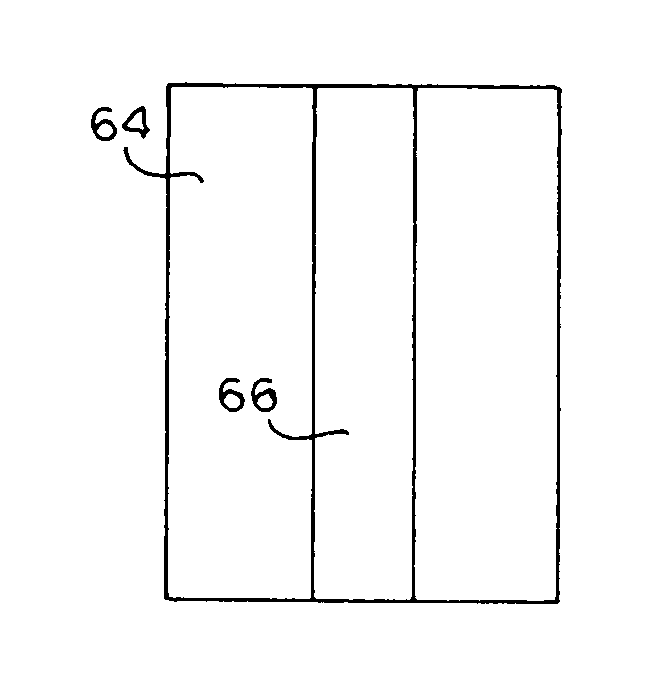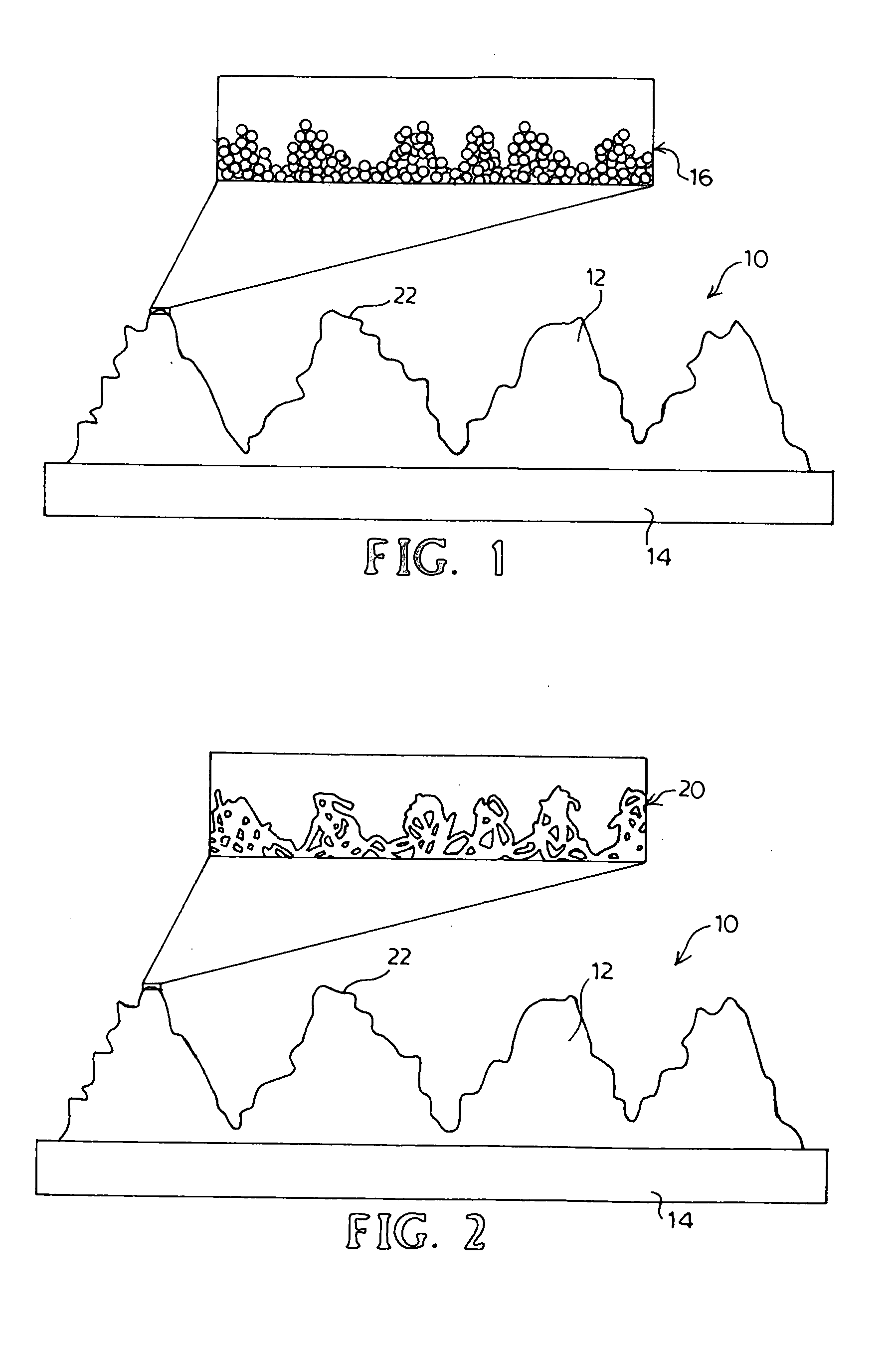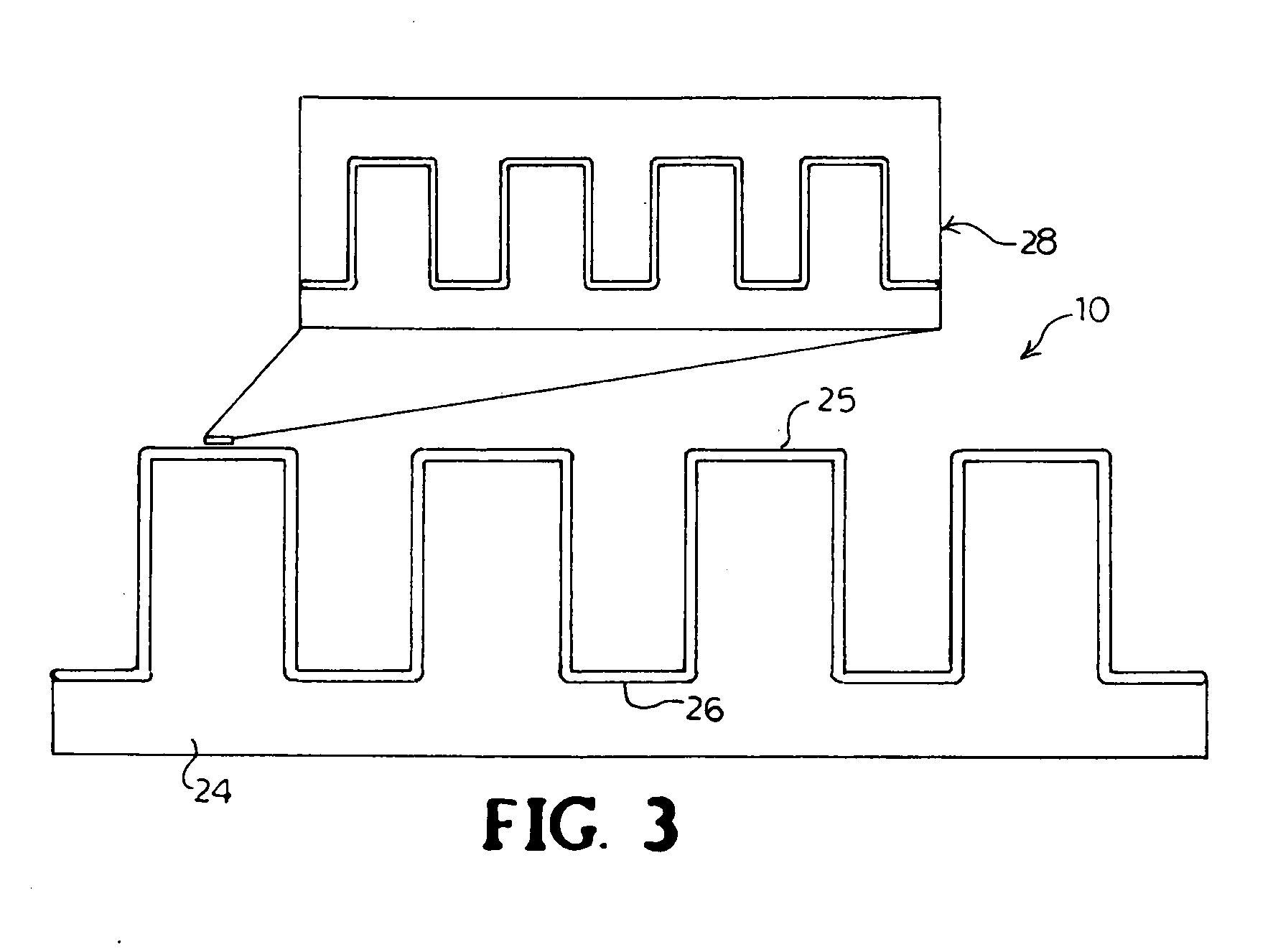Microfluidic systems with electronic wettability switches
- Summary
- Abstract
- Description
- Claims
- Application Information
AI Technical Summary
Benefits of technology
Problems solved by technology
Method used
Image
Examples
example 1
[0136]A surface structured wettability switch 10 was developed (see FIG. 7). The performance of the switch was to switch from a stabile hydrophobic state with a contact angle above 90 degrees to a hydrophilic state with a contact angle below 30 degrees in about 1 second. The gold electrodes 46 were evaporated on to a glass slide 48 with a non coated 1 mm wide glass area separating the two electrodes 46. On top of one of the electrodes 46 Au-coated SiO2 particles 50 (referred to as nanoparticles from now on) were inkjet printed. All experiments were performed in Class 10000 laboratory environment, RH˜40%, 20° C. with an exception made for Atomic Force Microscopy (AFM), which were performed in Class 1000 laboratory environment, RH˜40%, 20° C.
[0137]The gold electrodes 46 were evaporated with 30-50 Å Ti as adhesion enhancer and a ˜1 mm thick metallic thread as a mask between the two electrodes 46. Standard glass microscopy slides 48 were used as substrates. Citrate stabilized Au@SiO-par...
example 2
[0141]A surface structured wettability switch 10 is developed (see FIG. 9). The performance of the switch 10 is to switch from a stabile hydrophobic state with a contact angle above 100 degrees to a hydrophilic state with a contact angle below 30 degrees in about 1 second. The plastic foil 56 is embossed and the gold electrodes 54 are inkjet printed on top of the embossed substrate with a 500 um wide area separating the two electrodes. All experiments are performed in Class 10000 laboratory environment, RH˜40%, 20° C.
[0142]The plastic PC foil 56 (Makrofol DE 1-1) is purchased from Bayer Material Science, Germany. The gold nanoparticle ink (NPG-J) is purchased from Harima, Japan. The PC foil 56 is placed in a hot embossing machine (DecoPrint P-2000, Magdag Printing Systems, Switzerland) and is embossed with a microstructured stamp (MLA-B, NIL Technology APS, Denmark). The gold nanoparticle ink is printed on the microstructured PC foil with an inkjet printer (DMP-2831, Fujifilm Dimati...
example 3
[0145]A surface structured wettability switch 10 is developed (see FIG. 10). The performance of the switch 10 is to switch from a stabile hydrophobic state with a contact angle above 100 degrees to a hydrophilic state with a contact angle below 30 degrees in about 1 second. The gold electrodes 60 are inkjet printed and embossed on plastic foil 62 with a 500 μm wide area separating the two electrodes 60. All experiments are performed in Class 10000 laboratory environment, RH˜40%, 20° C.
[0146]The plastic PEN foil 62 (Teonex Q65FA) is purchased from Teijin DuPont Films, Japan. The gold nanoparticle ink (NPG-J) is purchased from Harima, Japan. The gold nanoparticle ink is printed on the foil with an inkjet printer (DMP-2831, Fujifilm Dimatix Inc, USA) with printing heads generating 10 picoliter drops.
[0147]A PEN 62 film is prepared with two gold electrodes 60 as described above. The PEN film 62 with the two electrodes 60 is then placed in a hot embossing machine (DecoPrint P-2000, Magda...
PUM
| Property | Measurement | Unit |
|---|---|---|
| Hydrophobicity | aaaaa | aaaaa |
| Surface structure | aaaaa | aaaaa |
| Perimeter | aaaaa | aaaaa |
Abstract
Description
Claims
Application Information
 Login to View More
Login to View More - R&D
- Intellectual Property
- Life Sciences
- Materials
- Tech Scout
- Unparalleled Data Quality
- Higher Quality Content
- 60% Fewer Hallucinations
Browse by: Latest US Patents, China's latest patents, Technical Efficacy Thesaurus, Application Domain, Technology Topic, Popular Technical Reports.
© 2025 PatSnap. All rights reserved.Legal|Privacy policy|Modern Slavery Act Transparency Statement|Sitemap|About US| Contact US: help@patsnap.com



